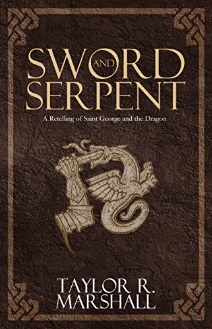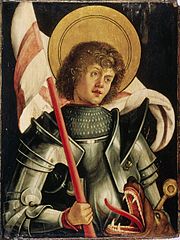 As the yet-to-be-invented Gregorian Calendar ticks over from the third to the fourth millennium, the Roman Empire has ninety-nine problems decides that the upstart Cult of Christ is responsible for just about all of them. Beset by everything from the gods falling silent to military defeats to economic downturns, the zeitgeist of the day finds in the oddly religious Christians the perfect scapegoat. For Jurian, the mixed-blood son of a Greek man with bright red hair and the strange Roman-barbarian name Lucius Aurelius Georgius, it means the destruction of his dreams and the backdrop to an Empire spanning adventure. Forced to care for his family at too young an age when his father is murdered for his faith, Jurian’s life only gets worse when his rival leads the authorities to his home to kill his devout mother and the local priest. Orphaned and alone save for his younger sister whom he must protect, Jurian sets out to find his last living relatives in Rome itself.
As the yet-to-be-invented Gregorian Calendar ticks over from the third to the fourth millennium, the Roman Empire has ninety-nine problems decides that the upstart Cult of Christ is responsible for just about all of them. Beset by everything from the gods falling silent to military defeats to economic downturns, the zeitgeist of the day finds in the oddly religious Christians the perfect scapegoat. For Jurian, the mixed-blood son of a Greek man with bright red hair and the strange Roman-barbarian name Lucius Aurelius Georgius, it means the destruction of his dreams and the backdrop to an Empire spanning adventure. Forced to care for his family at too young an age when his father is murdered for his faith, Jurian’s life only gets worse when his rival leads the authorities to his home to kill his devout mother and the local priest. Orphaned and alone save for his younger sister whom he must protect, Jurian sets out to find his last living relatives in Rome itself.
Tucked away in the Imperial backwater of modern day Libya, the high priestess of an ancient religion has the opposite problem. Sabra’s god is far from restless – he’s hungry for the blood of the innocent. The daughter of the local governor, she was chosen to administer the local religious rites, which include the monthly sacrifice of a randomly chosen child from the district. As one would expect, her own adventure puts Sabra on a collision course with Jurian that leads to both of them confronting their figurative and literal demons before the final page of their story.
Is there a name for the genre that results when “Sword and Sorcery” meets “Sword and Sandal”? Help me out here, comment section, because Taylor Marshall’s “Sword and Serpent” lives sits right in the mid-point of those two genres. It’s fast paced and action packed, the action revolves around fairly complex political maneuverings, and with the exception of Jurian’s rival – the man whose machinations set the whole thing in motion is a moustache twirling villain driven by his own petty jealousies – most of the characters are fully fleshed out and motivated by their own distinct viewpoints. It’s got everything from Roman pageantry and decadence, to long journeys afoot and by boat, to wizards and magic swords.
(Before we go any deeper into “Sword and Serpent”, and now that you’ve already clicked through to read the review proper, allow me a brief moment to admit that my reading choices of late have tended toward the modern Christian sci-fi and fantasy. Blame the Lenten season and “The Heretics of Saint Possenti“, the latter of which was so good it left me looking for more. We’ll return to your regularly scheduled independent reviews of more universal fare next time.)
As a quick squint at the cover will reveal, “Sword and Serpent” is a retelling of the tale of Saint George and the dragon. I don’t know about you, but the mental image in my mind of Saint George owes a lot more to Middle Ages and Renaissance era artists than to artists that were contemporaries of Saint George:

Hans Kulmbach rendering (circa 1510) Courtesy of Infogalactic
By placing Jurian/Georgius into the proper historical context of the latter days of the western Roman Empire, Marshall provides a much more interesting take on the legend than the usual sword and sorcery version of George as a knight in shining armor sitting astride a pure white charger. He wields a seax, the short blade of Germania rather than the long straight sword with crossed pommel of the crusades, and never once rides at a dragon with lance in hand. The result is a story that feels more historical than fantastic – demonic gods and giants and magic wizards notwithstanding. It also allows Marshall to weave together some nice biblical and historical touches. The demonic god turns out to be the serpent from the Garden of Eden, the giant turns out to be one of the last surviving Philistines, and the wizard turns out to be…who else but a Greek priest named Nickolaus with a propensity to distribute gifts via ashy paths and the ability to speed about the earth at impossible speeds. Marshall never insults the reader’s intelligence by specifically naming that last one, and far be it from me do so either. Suffice it to say that Nickolaus’ powers are presented as supernatural, but no more miraculous than those of a Gandalf or Merlin.
And speaking of Merlin, he also makes an appearance in the novel. Only reference by his more historical name Merddyn of Camulodunum, the story ties Jurian’s adventure into the tale of King Arthur when a travelling ship of Vikings gives Excalibur to Jurian. The inscriptions on the sword suggest that Jurian is the prophesied one destined to use the sword to slay a beast then carry it back to Merry Old (Eventually To Be Called) England and shove the blade back into the stone where it will wait until…well, you know the rest of that story. Forgive the flippant description, most of the information presented in this scene consists of subtext, and while they sound clichéd in a one paragraph retelling, Marshall dresses up the ‘magic sword’ and ‘prophesied one’ business with enough fresh material to make it feel familiar without feeling old hat. It also helps to shine a light on the seldom seen connective tissue between Rome and Camelot.
In much the same way, the plot thread of the high priestess of Molech provides interesting connective tissue that links the pre-Roman, the Roman, and the Christian religions in a single time and place. Sabra hates her job and struggles to find a way to justify the murder of innocent children of her district to placate her ravenous god. Tired of the sad and ineffectual efforts to appease the beast, she heads off to Rome to seek a more secular solution to her district’s woes. During the course of her adventure, she meets Jurian and his giant friend, and drags them back across the Mediterranean for the climax of the tale that sees Jurian and the giant struggle to evade the Roman troops hunting them down so that they can do battle with Molech.
While this is the story of a Catholic saint, the historical context of the background allows for an easy avoidance of more modern splits in Christian theology. Just as anyone can enjoy a good story of the Crusades, anyone can enjoy this earlier epoch as it follows the growing pains of Christianity. The miraculous nature of supernatural events is framed by the witnesses who most often include a pagan priestess and an Christian whose faith runs more toward the pragmatic and agnostic than the zealous. At least until they both learn to embrace the source of magic in their world, and their own roles in helping to make a better world by fighting evil in both its supernatural and more mundane forms.
‘Is there a name for the genre that results when “Sword and Sorcery” meets “Sword and Sandal”?’
It’s generally just called ‘historical sword & sorcery” or “historical fantasy. Maybe “Roman sword & sorcery”. Richard Tierney and David Drake have both written such tales in the past. This sounds like a cool story!
I would be remiss if I didn’t mention the classic Roman S&S (and Christmas!) tale, “Roads” by Seabury Quinn:
https://dmrbooks.com/test-blog/2017/12/24/roads-by-seabury-quinn
Jon
Sounds like a book worth reading. And a blast to read
Well according to the Catalan legends, the dragon kidnapped a princess and was going 5o eat her. St George rescues her by piercing the dragon with a lance. The blood turns inro roses.
(And that where the tradition of giving roses to wives and moms on his feast day comes from)
St George then returns the princess to her kingdom.
He refuses her hand in marriage and rides off.
Now it’s quie implicit but St George is regarded as the proto knight errant questing his way through the world.
So knights of the round table?
xavier
-
It is a fun read, and I’m not sure why it’s labelled as a Young Adult novel, save for the fact that the two protagonists are teens. The more I think of it, the more this book reminds me of something John C. Wright would produce – only without the mermaids and talking dogs. So far, it’s the first book in a trilogy, so you never know…
-
The sequels are readily available according to Amazon.
-
I picked it up and enjoyed soon after it was first published, but I had no idea there were sequels.
-
-